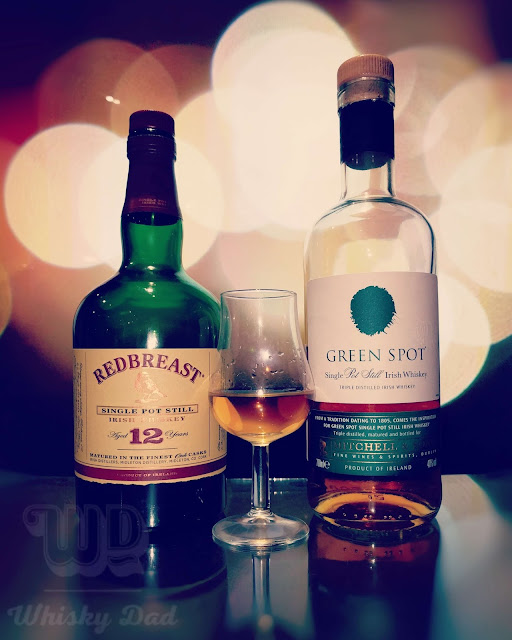The Internet is a wonderful tool for the whisky enthusiast. Discovering and acquiring whisky has never been easier, with a dizzying choice of both old and new whiskies just a few mouse clicks away. I often browse my favourite websites checking prices and availability, reading tasting notes and writing wish lists of my next whisky purchases. For example, I am currently holding out for the latest Springbank 12 Year Old Cask Strength and Laphroaig 10 Year Old Cask Strength expressions. Historically, both tend to arrive in Australia in very limited quantities and sell out quickly.
During these online browsing sessions, especially when I was first getting serious about whisky, I kept stumbling across odd whisky labels. These whiskies were not produced by a particular distillery, but rather were sourced from a variety of distilleries and bottled under a different branding such as Gordon & MacPhail, Signatory, Rest & Be Thankful and Heartwood. This process, I would eventually learn, was called independent bottling and it was a practice that had been going on for almost as long as whisky had been produced.
So what is independent bottling exactly?
To understand independent bottling, you must first understand the fundamentals of whisky production. Whisky is an alcoholic spirit made from distilling a fermented cereal and aging it in wooden barrels or casks (the terms ‘barrel’ and ‘cask’ are interchangeable). When the fermented cereal (usually malt, in the case of Scotch whisky) is first distilled, it is a clear liquid distillate referred to as new make. This new make is not whisky in a legal sense, although it will become whisky once it has been aged in wooden barrels for a minimum legal period or longer. During this aging process, the new make and wood undergo a variety of marvellous chemical reactions and tannins from the wood leach into the liquid imparting a more familiar whisky colour. Many factors affect the interaction between distillate and wood; such as how long it remains in the barrel, the type of wood used in the barrel, what the barrel held if anything prior to being filled, the thickness of the barrel staves, the amount of char inside the barrel, the size of the barrel and the average temperature, temperature variations and barometric pressure within the storehouse etc. That is a lot of very influential factors that occur after distillation.
The decisions about how to use these factors are the tools of the independent bottler. An independent bottler will source and provide their own barrel or barrels to a distillery, to be filled with a new make (or very young) spirit. This spirit may be the same used to make the distillery’s signature expressions, but that is where the similarities end. Whatever whisky is produced from that independent bottler’s cask will be unlike anything else the distillery makes and will quite often be unique to that particular cask or casks.
So now that you know independent bottling is more than just filling a barrel with someone else’s whisky, here’s an interview with ‘Caskologist’ George Koutsakis of Whisky Foundation, a new e-commerce venture specialising in independently bottled whiskies.
WD: Welcome George, what is a ‘Caskologist’ and what is your involvement with Whisky Foundation?
GK: We are a small, yet passionate, team here at Whisky Foundation and we all take on a variety of different roles. The term ‘Caskologist’ is an invented term which best describes the part I play in the organisation.
My job is basically to manage and stay on top of anything to do with the Whisky Foundation website. Working closely with our sales team, I add, research, and sample new products and observe the statistics to find which bottles are of greatest interest to our customers.
With my past expertise in whisky tasting and events, and my experience writing, I also manage the Whisky Foundation blog, and try to create the most educational and captivating content to keep our readers entertained. In order to do so I closely follow industry news and new releases.
WD: What do you look for when selecting a cask and do you already have a potential new make spirit fill in mind?
GK: This is a question better answered by the independent bottlers themselves. The wonderful Italian independent bottler Wilson & Morgan, who select the finest Scottish casks to join their collections, have produced a few exclusive bottles for Whisky Foundation. Their brand ambassador Luca Chichizola, who is co-responsible for selecting casks alongside chairman Fabio Rossi, had this to say:
It must be exciting to us. We have tasted more than 3000 malts in our lives so far. So it must be ‘different’, it must shine. It must not induce a yawn or an ‘OK, more of the same’ thought. Even if it's still immature and rough, it must have personality. About new make... not very interesting to us, if I may say so. We always buy whisky that is already 3 years old, so that it has lost its most undesirable traits of immaturity and it's easier to see where it will go. With rum on the other hand (Wilson & Morgan has a sister company called Rum Nation) we definitely buy new make either for bottling white rum or for maturation.
WD: Mass produced whisky is commonly chill-filtered and even non-chill filtered, non-cask strength whisky is usually allowed to rest to separate the less soluble particulate matter or ‘floc’ before bottling. What are your thoughts on whisky filtration and how does this affect Whisky Foundation bottlings?
GK: When it comes to whisky filtration, I am a firm believer in sampling the whisky in its most natural form. I find non-chill filtered whiskies provide a ‘fuller’ and ‘richer’ mouthfeel, due to the presence of fatty acids and proteins, which are removed throughout the process of chill-filtration.
Non-chill filtration gives drinkers a more natural and organic experience. That cloudiness should be welcomed. Most of the independent bottlings we have at Whisky Foundation come just like that, at cask-strength and non-chill filtered, giving the raw, intense, unique flavour I love most in my whisky.
WD: What are some of the things that independent bottlers could do that would not be possible or perhaps financially viable in a large distillery?
GK: A large distillery needs to focus on consistency. Several flagship releases take up most of the distillery’s production capabilities, which, sadly, can restrict distillers and make it hard for them to create unique, one-off releases.
Independent bottlers, however, only create unique, one-off releases, which means their sole purpose is to experiment, observe, and release whiskies that have matured for the right amount of time, providing balance above all else.
The fact that these organizations hold so many different casks from different distilleries means that they can choose exactly how they treat the whisky. They can create unique blends, and use unique methods to age and bottle a whisky. Two casks of the same Scotch can be aged in different kinds of oak, for a different duration, and at different temperatures. Experimentation takes the front seat when it comes to independent bottling.
WD: A lot of whisky drinkers enjoy the familiarity and availability of a large distillery’s flagship whisky. How do you convince these people to buy an independently bottled whisky that is often much more expensive and likely to never be repeated?
GK: Firstly, people’s preconceptions need to be challenged. I look at large distilleries and independent bottlers as two completely different entities, in the same way I might look at a hotel and a villa. We need both, and both provide us with an amazing, yet very different service.
A large distillery will give you your favourite dram over and over again, whenever you need it for years, even decades. An independent bottler will give you something different every single time, challenging you to explore, learn, and delve deeper into the world of whisky.
It all comes down to education. Whisky tastings, promotions, and a whole lot of information can make all the difference. Step by step, we simply need to introduce people to independent bottling and show them what makes the experience so special and satisfying.
With a little knowledge about independent bottling and a willingness to explore, it’s possible to find a wealth of under-recognised whisky gems.
WD: Thanks for your time, George, and for sharing your thoughts on independently bottled whisky.
GK: Thank you for having me, it’s been a pleasure.
If you consider yourself a whisky enthusiast, you shouldn’t ignore independently bottled whisky. Independently bottled whisky present an opportunity to try unique expressions sourced from your favourite distilleries. A lot of thought goes into the cask selection process yet even with years of experience the results can be anything but predictable. This dramatic and often unpredictable effect that ageing whisky in wood has, is one of the things I love about whisky. It is comforting to know that no matter where the whisky was distilled, I can always be surprised.




